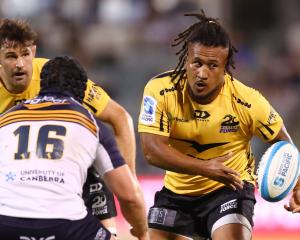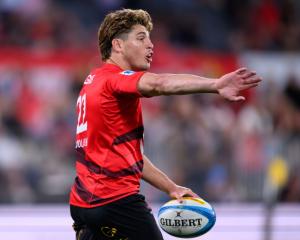Change is inevitable - and the national provincial championship certainly has undergone a raft of changes since Otago last won it. Rugby writer Steve Hepburn looks at what has happened to our domestic rugby competition since 1998.
Starless
Then
In 1998, when Otago played Canterbury in the opening round of the competition, there were 24 players in the starting teams who were Super rugby players.
The Otago side had more than 410 caps in its side. When Otago played and won the final, it had nine past or present All Blacks in its team and also two future Scottish internationals in Brendan Laney and John Leslie.
Now
When Otago took on Canterbury at Forsyth Barr Stadium earlier this month, there were 11 Super rugby players in the starting line-ups.
Just three of those were in the Otago starting XV. Matt Todd was the only All Black on display from either team.
What was most telling was the experience of the players. No-one from the Otago side had played more than 50 games for the union.
All up, the men in blue and gold had just over 200 caps for Otago.
Three players from the Canterbury side - Nasi Manu, Willie Heinz and Todd - had played more than 50 games for their province.
Canterbury actually had about the same amount of experience as its 1998 team.
Perhaps that is why it has won the title six times in a row.
When the final of this year's ITM Cup is played, the All Blacks will be in camp getting ready to take on the United States in Chicago.
Middle management
Then
Middle management is a modern business term. They make the day-to-day decisions.
If you applied it to rugby, it would mean the hard grafters, the ones who have been there a while and can be relied upon to do the right thing.
Back in the late 1990s, players such as Andy Slater, John Leslie, Angus Gardiner, Deon Muir and Davin Heaps abounded.
Players in their mid to late 20s who had racked up a few caps for their provinces. Would never be All Blacks but keep the side together and heading in the right direction.
Now
These seasoned campaigners are now overseas, plying their trade for another club.
And with even more money available for English and French clubs, these players are going to depart in even greater numbers.
How much better would Bay of Plenty be if it had Tanerau Latimer, Toby Arnold and Phil Burleigh?
Same with Otago. Paul Grant, Tom Donnelly and Glenn Dickson have all departed over the past couple of years.
They earn much more overseas, they are not going to be All Blacks and the grass is a good deal greener off shore.
Anywhere but here
Then
The Highlanders made it to the semifinals in 1998, and 20 of them went back to play for Otago.
The rest, from three other provinces, went back to their provinces and played the season out.
Now
There are 75 players in the five starting line-ups of the New Zealand Super rugby sides.
Take out at least 30 of these players who head into the All Black camp.
Then more than a dozen have simply gone overseas, lost to provincial rugby.
The likes of Andre Taylor, Jarrad Hoeata, Andy Ellis and Corey Flynn. Others - well into double figures - have injuries they have to get right before the next Super rugby season starts.
Ardie Savea and Jeffery Toomaga-Allen never got out of the starting gates for Wellington this season.
Andrew Horrell is gone for the season for Hawkes Bay after helping destroy Otago at the weekend as he has surgery scheduled.
One big man is suspended. All up, there would be fewer than 25% of Super 15 starters playing week in, week out in this year's ITM Cup.
Where are you?
Then
When Otago played Canterbury in 1998 there was a crowd of 18,500 at Lancaster Park on a chilly Friday night.
Crowds at Carisbrook built throughout the year and more than 40,000 were said to have packed the place for the final.
Now
On a Thursday night, about 4500 people turned up earlier this month as Canterbury beat Otago at Forsyth Barr Stadium.
Last year's final in Wellington attracted just over 10,000. About 2500 came along to see Otago lose to Northland.
The match between Wellington and Manawatu attracted 2700 at Westpac Stadium last month. That is a lot of empty yellow seats.
Cross-over confusionThenThere were 10 teams in the competition. Everyone played everyone, followed by semifinals and a final.
Now
The 14-team competition is split into two sections and not everyone plays everyone.
This year, Hawkes Bay does not play heavyweights Auckland and Canterbury, yet Otago and Southland miss out on playing woeful Wellington.
A team that finishes 11th overall can be in a semifinal.
All adds up to
Then
An exciting final in 1998, which was full of All Blacks and great plays. Otago smashed Waikato 49-20.
Now
Canterbury will win it, for a depressingly seventh straight time. In front of about 10,000 one-eyed Cantabrians.
Some guy Carter is giving them a hand over the next couple of weeks just in case they need it.
Changes - not all of them bought by the NZRU - have led to the championship turning into more or less a development competition.
That was the way it was headed five years ago and now it has arrived.
Super rugby is the big cowboy in town. Full of swagger and fight.
provincial competition - burdened by history and a congested playing calendar - is not quite the donkey out the back.
But it is neither Sundance nor Butch.












